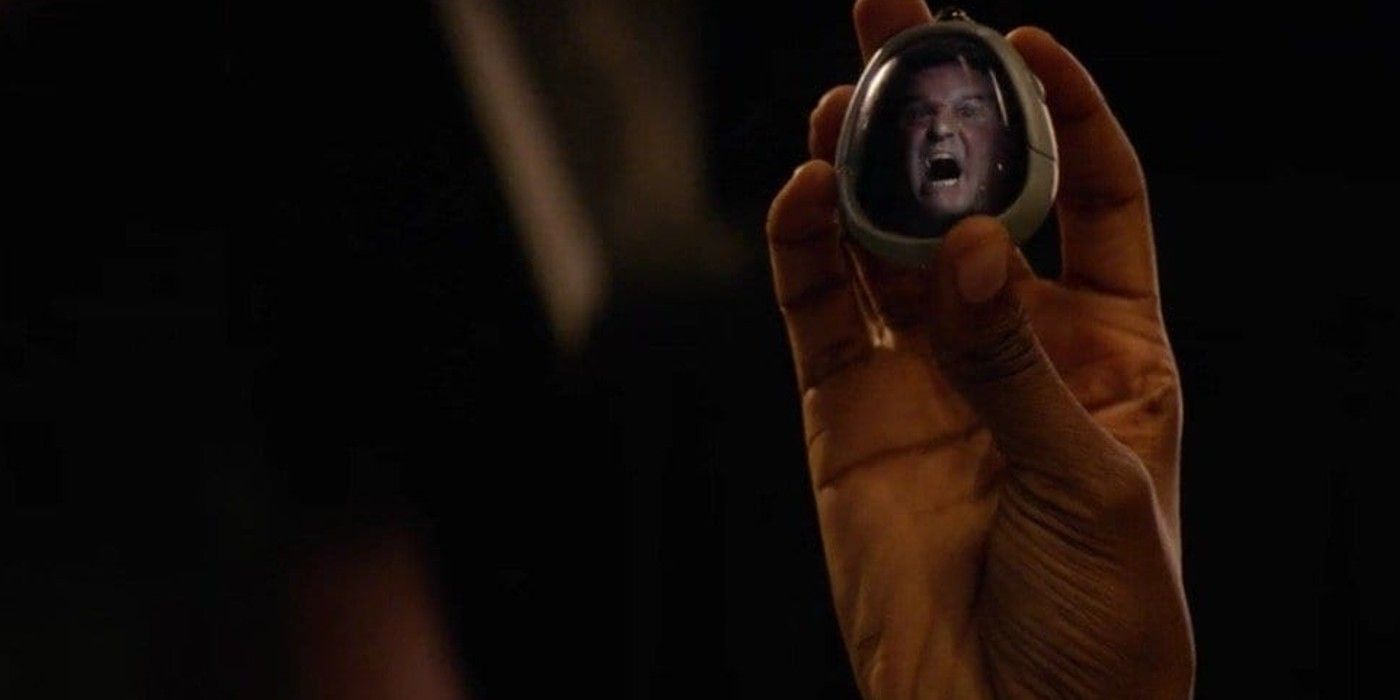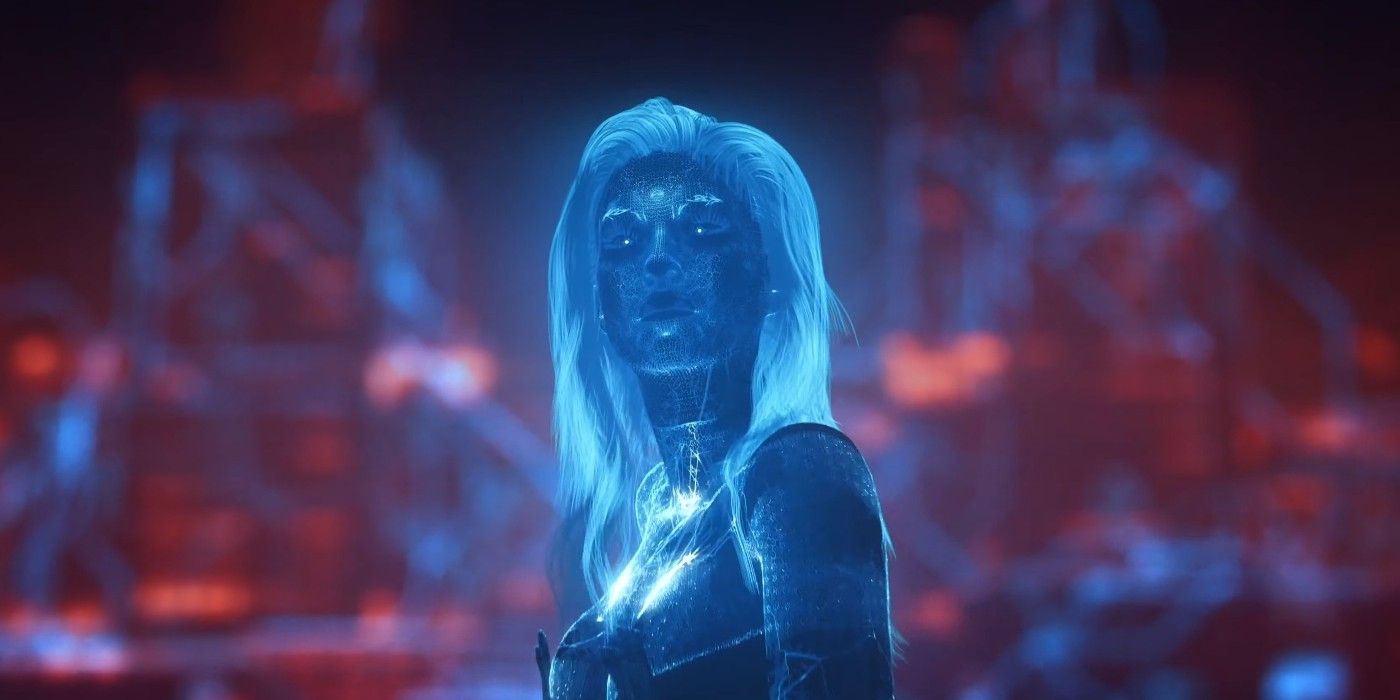Speculative fiction that imagines the ways technology could impact human life offers limitless possibilities, including many dark and disturbing ways it could be abused. Cyberpunk 2077 and the television series Black Mirror both fell into the same rut of becoming hyper-focused on one possible ramification of technology - perfect copies of a human mind - thereby missing out on the opportunity to explore other creative ways technology could make the future bleak. Cyberpunk as a genre focuses on a variety of ways advanced technology changes what it means to be human, including cybernetic augmentations raising transhumanist themes, immersive digital realms bringing the nature of reality into question, and Artificial Intelligence challenging the definition of what it means to be a person. This makes Cyberpunk 2077 and Black Mirror’s myopic focus on digital copies of human minds a disappointment.
The cyberpunk genre staple of showcasing rampant capitalism, where life has become a commodity and the wealth gap has grown insurmountable, is present in mega-corporations like Arasaka in the Cyberpunk 2077 video game, but the preoccupation with digital copies of human consciousness prevented the game, and the Black Mirror series, from going in more imaginative directions. Cyberpunk 2077 introduced the idea of Engrams, with an Engram of Alt Cunningham roaming the net, and the Engram of Johnny Silverhand sharing a body with the player character, V. Black Mirror dabbled in presenting a variety of ways technology could impact human lives, from social media gone awry to VR fighting games used for cybersex, but the introduction of Cookies into the series’ lore quickly became its sole preoccupation for far too many episodes.
Players remain hopeful the next-gen version of Cyberpunk 2077 will redeem its rocky start, but even if the update irons out bugs and optimization issues, the main storyline will remain unambitious due to its focus on digitized human copies. Engrams were never a major focus for the Cyberpunk tabletop RPG, which showcased human augmentation, rebels living outside of society’s norms, and the ideal of building a lasting, personal legend in a world where life is otherwise cheap and disposable. The central plot focus on two Engrams, Cunningham and Silverhand, comes at the expense of exploring more of the setting’s technological changes in depth. The 2014 Black Mirror special White Christmas introduced the concept of Cookies, analogous to the Engrams of Cyberpunk 2077. This episode explored the idea of torturing digital copies of a human mind to make a better smart home, and later to extract a confession for a crime.
Black Mirror Focused Too Much On Copied Minds Being Tortured
Though many later Cookie-focused Black Mirror episodes were critically acclaimed, it showed a lack of imagination and willingness to explore other facets of technology, doubling down on White Christmas’ core concept to the point of redundancy. USS Callister was another Black Mirror variation on abusing copies of human minds, this time for one man’s sadistic fantasies. Hang The DJ put Cookies through a simulated ordeal in order to calculate dating compatibility, and Black Museum yet again tread the same tired ground with mass-produced copies of a human mind experiencing constant electrocution. San Junipero provided the one altruistic approach to the Cookie concept, with copies of human minds living in an idyllic virtual reality as a man-made afterlife, but the multiple episodes rehashing the Cookie concept proved tedious and wasted some of the series’ potential.
Cyberpunk 2077 still touches on some of the tabletop RPGs core themes. V is initially partnered with Jackie Wells, who embodies the Cyberpunk TTRPG ideals. Wells reveres the Night City legends of the past, as is willing to die to create a lasting legacy of his own. This is more of an afterthought for V, however, as the presence of the Silverhand Engram and sharing a body with a digital human copy quickly becomes the sole focus of the game’s main story.
The transhumanist themes of human augmentation are still technically present, as the player can upgrade their cyberware at Street Docs throughout the game, but V has little time for reflecting on their changing body, with another personality struggling for control of it. A few side missions explore other imaginative consequences of technology, like the boxing match against twins whose linked cyberware has caused them to blur their identities. More focus on creative concepts like this could have made for a stronger story in Cyberpunk 2077, but as with Black Mirror’s Cookies, Engrams take up too much of the game’s focus.
Johnny Silverhand is a compelling character in Cyberpunk 2077, and having an Engram along for the ride offered an opportunity for banter even with a game focused primarily on solo missions. Alt Cunningham’s physical death, and her ascending to becoming a powerful figure in the Net who rivals the godlike roaming AIs beyond the Blackwall, allowed Silverhand’s greatest regret to have significance beyond his personal vendetta against Arasaka. Later in the game the Engram of the slain Saburo Arasaka takes over his son’s body to resume control over the corporation. None of these are particularly bad storyline additions, but they all center around the concept of Engrams, to the exclusion of a more diverse exploration of the genre’s potential.
Cyberpunk 2077 Explores Engrams From Every Angle, Eschewing Story Variety
Cyberpunk 2077’s default ending, certainly the least “punk” conclusion the game offers, features V seeking aid from the Arasaka corporation. They are unable to find a way to keep V’s body alive, and the character can either accept the inevitability of their impending death and live out their remaining months to the fullest, or take the chance at immortality as an Engram, under Arasaka’s care. From the core plot device of the relic biochip that V takes into their body, to Cyberpunk 2077's ending, Engram’s remain a singular fixation in the game's story. While side-missions offer some variety and supporting characters like Evelyn Parker explore other possible abuses of human augmentation, Cyberpunk 2077’s main story focuses on exploring the Engram concept from every angle possible, to the exclusion of other ideas.
The notion of Arasaka’s virtual prison for Engram copies may remind players of Black Mirror episodes like White Christmas or Black Museum, and the Arasaka patriarch’s second chance at life in his son’s body presents a different technological answer to life after death from San Junipero. There is nothing inherently wrong with taking sci-fi concept and exploring it to its fullest, but in the case of both Cyberpunk 2077 and Black Mirror, they did so at the expense of the endless variety and creative opportunities offered in science fiction.



